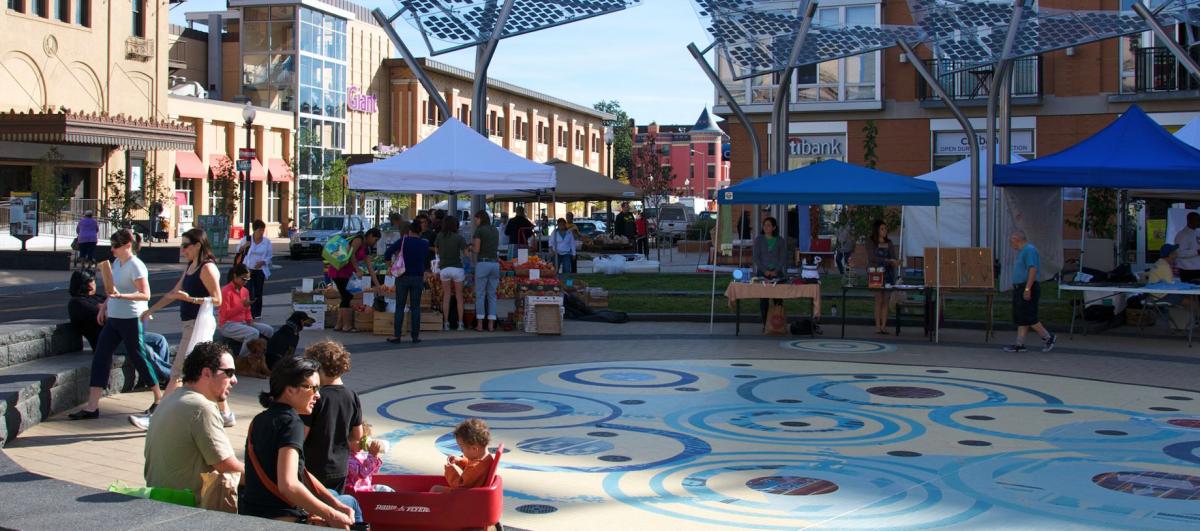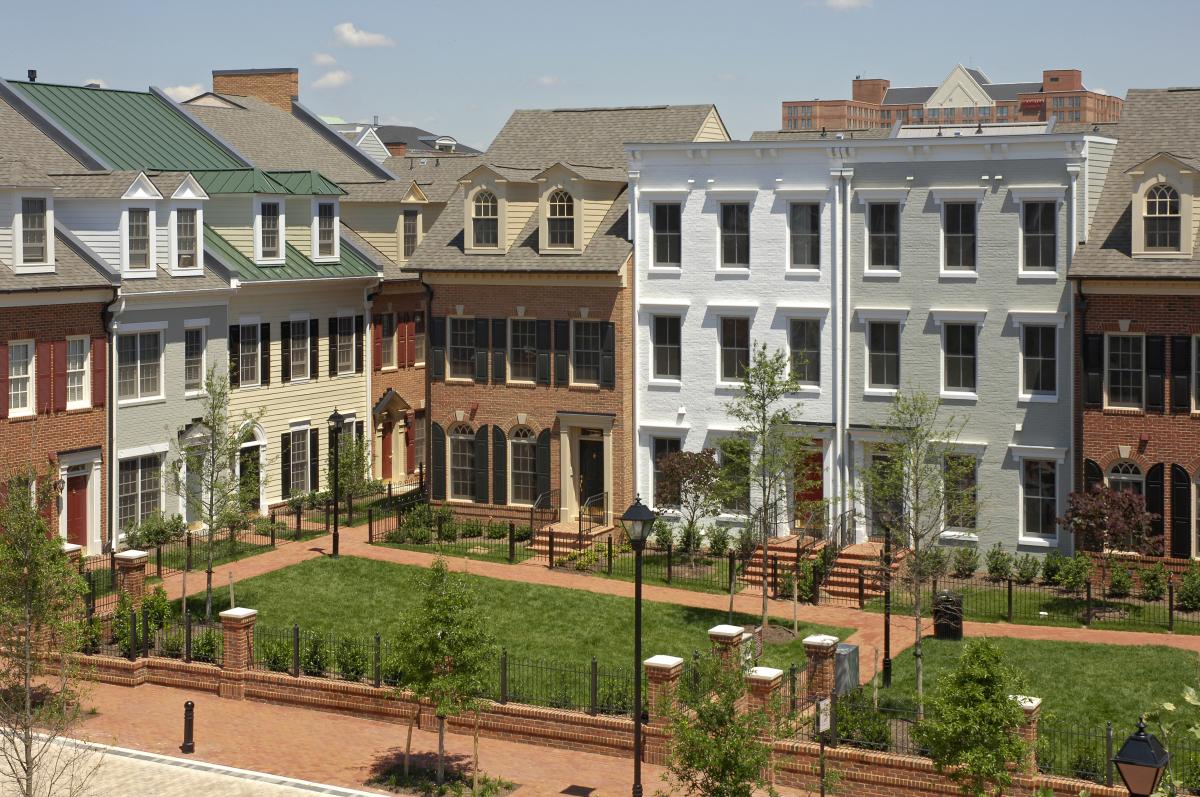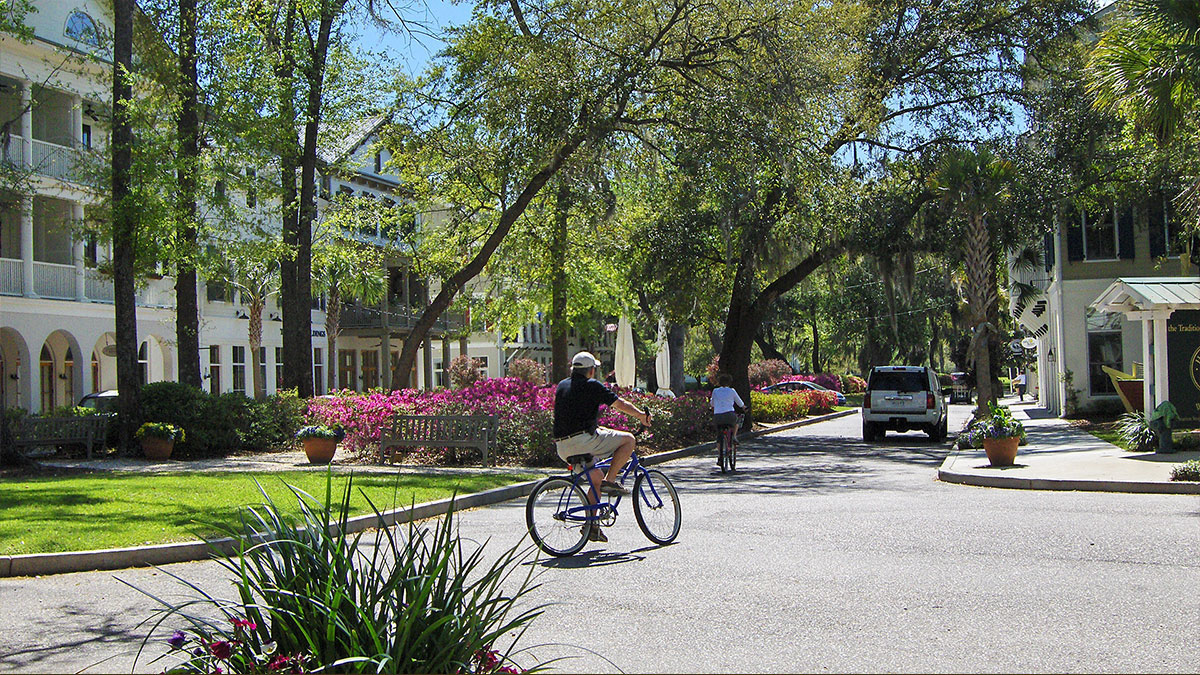New Urbanism is a planning and development approach based on the principles of how cities and towns had been built for the last several centuries: walkable blocks and streets, housing and shopping in close proximity, and accessible public spaces. In other words: New Urbanism focuses on human-scaled urban design.
The principles, articulated in the Charter of the New Urbanism, were developed to offer alternatives to the sprawling, single-use, low-density patterns typical of post-WWII development, which have been shown to inflict negative economic, health, and environmental impacts on communities.
These design and development principles can be applied to new development, urban infill and revitalization, and preservation. They can be applied to all scales of development in the full range of places including rural Main Streets, booming suburban areas, urban neighborhoods, dense city centers, and even entire regions.
New Urbanists want to see those human-scale neighborhoods return. We create tools to reform zoning and street design and develop underutilized building types—like shopfront houses and courtyard units—that contribute to diverse neighborhoods. We advocate for villages, towns, and cities consisting of neighborhoods designed around a five-minute walk from center to edge. These ideas are fundamental to New Urbanist thinking. Read our book about The 25 Great Ideas of the New Urbanism.

New Urbanists make placemaking and public space a high priority. New Urbanist streets are designed for people—rather than just cars—and accommodate multimodal transportation including walking, bicycling, transit use, and driving. We believe in providing plazas, squares, sidewalks, cafes, and porches to host daily interaction and public life.
New Urbanism is pragmatic. Great design is not useful if it can't be built. New Urbanists work with and include production builders, small developers, traffic engineers, appraisers and financial institutions, public officials, citizens and others with influence over the built environment to come up with implementable solutions.

New Urbanism is focused on design, which is critical to the function of communities. The size and shape of a plaza will help determine whether it is consistently alive with people or windswept and vacant. The organization of buildings in a neighborhood will help establish its character. Combining appropriate design elements makes places that are greater than the sum of their parts.
New Urbanism is holistic. All scales, from the metropolitan region to the single building, are related. A building that is connected to a transit stop will help the region function better, and well-organized region benefits the buildings within it. Streets that rely only on engineering tend to move automobiles and little else; all disciplines related to the built environment must work together to create great places.
Reclaiming underutilized and neglected places is a special focus of New Urban design and building. Through the federal HOPE VI and Choice Neighborhoods programs, for example, New Urbanism has transformed deteriorating public housing into livable mixed-income neighborhoods. Commercial strips with single-use development and excessive asphalt are transformed into lively main streets or boulevards through new urban design.

Above all, New Urbanism is about creating sustainable, human-scaled places where people can live healthy and happy lives. The walkable, vibrant, beautiful places that New Urbanists build work better for businesses, local governments, and their residents. Anyone that works to create, restore, or protect a great place can join in the New Urbanism movement.
Find a way to get involved today.
Top photo: The Circle, a roundabout intersection with a park, in Normal, IL, a masterplan by Farr Associates. Source: Shigley Photo


















